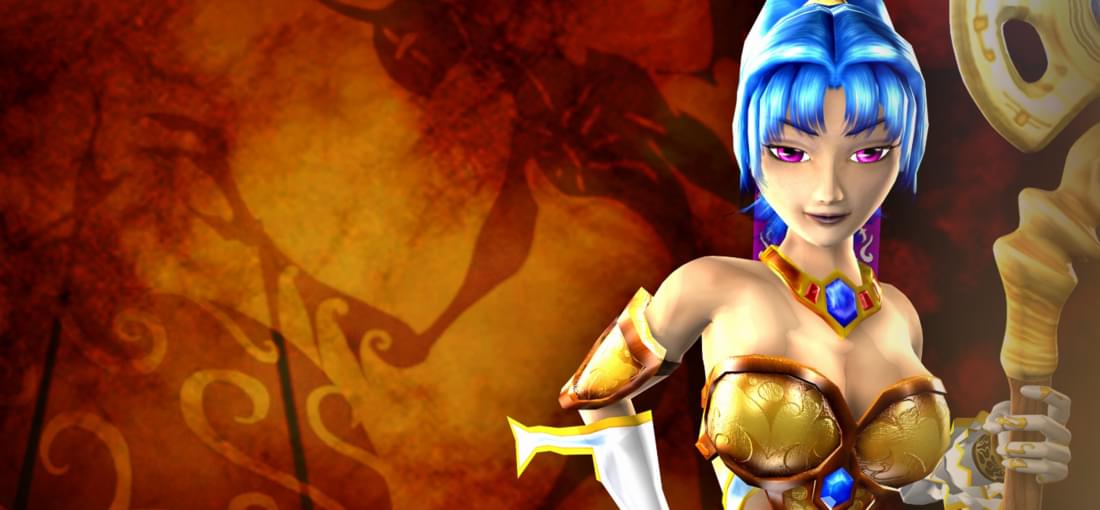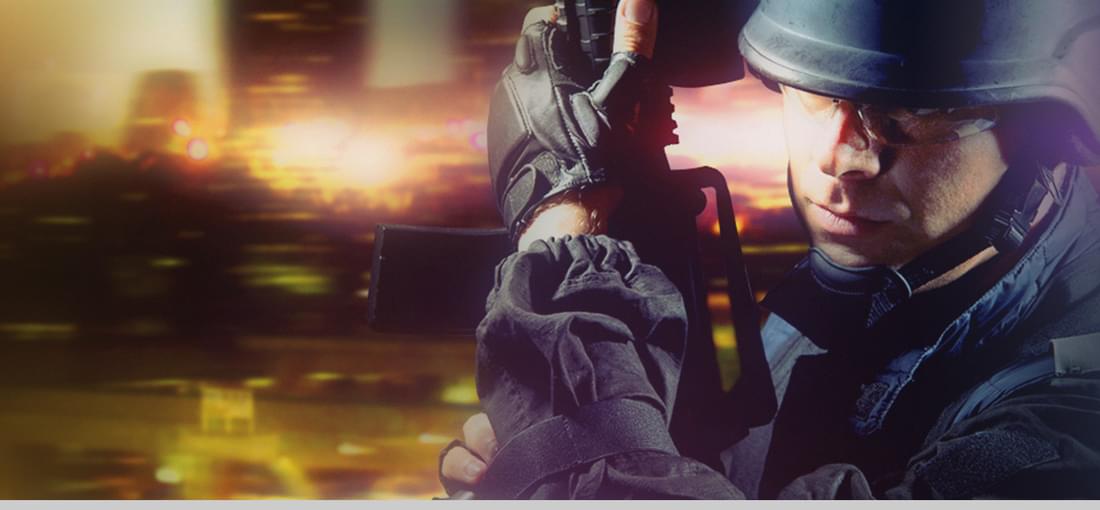


There are two kinds of RTS players: The competitive multiplayer crowds and the more comfortable single-player gamers who like to sit back and try out new strategies against a challenging AI opponent. Modern RTS games have almost exclusively favored the former group, but if you're in the latter then AI Wars is the best post-Red Alert 2 RTS game you could ask for. Almost every aspect of each randomly-generated campaign can be tailored to your style, from the map size (which can get pretty massive) to the AI's personality to the presence of third-party factions, so the result is a single-player (or co-op) experience that can scratch almost any RTS itch you have. Keep in mind that even experienced RTS players will need to spend a good chunk of time in tutorial campaigns. AI Wars is complex, and sadly its spotty documentation and interface don't offer much help. There are key tactical options that you have to learn almost by accident (like the fact that Champion frigates can warp back to your home base at any moment) and other hotkey functions that require multiple keys to do routine maneuvers. In fact one of the key factors in AI Wars' challenge is figuring out what weapons work best against what ships, and the intel reports that offer such information on each ship are horribly messy. The graphics in this game are oddly schizophrenic too. While I don't expect an indie game to look impressive, AI Wars is loaded with assets that look as though they came from 5 different games. You'll see meticulously-modeled home bases surrounded by pixel-art frigates and some rather cheesy nebulae in the background. The soundtrack is great in that 80's sci-fi sense, but has way too many melodramatic piano tracks for a game that almost completely lacks a story. As good as AI Wars is right now, I can't help but feel it would be a much, much better game with a redesigned UI and consistent art direction. That said, it's still one of the best single-player RTS experiences in recent memory.

Sudeki is a very interesting title, especially for the Xbox platform, which was almost completely devoid of JRPGs. Like Anachronox or Septerra Core, Sudeki is an attempt by a western studio to make an RPG with a heavy Japanese style. Even as far as JRPGs go, Sudeki's combat is weird. The gameplay completely changes depending on which of the four playable characters you currently control in battle. Play as the swordsman, and you have a standard hack-n-slash brawler game. Play as the gunwielding scientist, and you're suddenly playing an FPS. It sounds odd on paper but works great in game, giving you countless ways to mix and match playstyles except for the few unfortunate segments where you're playing as a lone character. Sadly, if you play this kind of RPG for an enthralling story, you're better off with Anachronox. Sudeki's world is woefully bland and loaded with inconsistencies and some ugly art design. Main characters are mostly likeable, but the relationships between them are poorly developed. The story does pick up an interesting pace towards the end, only to abruptly halt on a half-assed moral. I'd recommend Sudeki to somebody who likes shooters and brawler games and can't decide between the two. To anybody else, this psuedo-JRPG will come off feeling like supermarket-brand cereal. It gets the job done, but is totally missing the charm and flavor the originals had.
Entomorph, one of the most disturbing isometric-RPGs ever made. I solely blame this game for my persistent insectophobia and arachnophobia, and the game is crawling with reasons as to why. Instead of dragons and goblins, your enemies are gigantic insects with a taste for human blood. Some are even sentient and exist in aristocratic societies, like the dreaded black widow spiders. Simply put, if the thought ever crossed your mind that the big black spider hiding in the corner of your room was plotting to kill you, this game will convince you it's true. From an RPG standpoint, Entomorph is relatively shallow. Your pugilistic character never equips weapons or armor, and stats are improved by finding precious vials of Nectar, although it can be hard to judge just how much stronger you get with each vial. The story and narrative are where Entomorph jumped far ahead of its contemporaries. Character interaction is strong, with deep and memorable conversations with even minor characters. In that regard, it's worth mentioning that this was the first game to ever make me cry. Granted I was six years old at the time, but the shocking discovery that caused it was virtually unheard of for a pre-1996 RPG game. Even with low production values and dated visuals, Entomorph communicates a sense of bleakness like few other games. You really sense the loss of human life and growing isolation as the story grows more and more Kafkaesque.

Please note that this review only concerns SWAT 2. I have not played SWAT 1, but I understand that it is largely a FMV adventure game, which makes me wish these weren't bundled together because they're completely different in terms of gameplay. SWAT 2 is a tactical sim like no other. Being good at this game means never killing anybody, using as few units as possible, and wrapping up a mission before the AI blows it (sometimes literally) for you. On the flip side, you can play a separate terrorist campaign, where you must take hostages, coerce them into aiding you, and fleeing before the police surround you. Though you'd expect a terrorist campaign to be an afterthought in a game that trumps the late SWAT chief Daryl F. Gates as one of the producers, both campaigns are surprisingly fleshed out, offering a great depth of strategic options, tense missions and a dark story of conspiracy. In the SWAT campaign, you take control of elements of SWAT officers attempting to neutralize a hostile situation before anybody winds up dead. This could mean saving a daughter from her abusing father, foiling a bank robbery, or stopping a full-blown riot. Each mission demands a different approach, but you can generally ease (if not outright diffuse) the conflict by attempting negotiations. Missions start off nice and quiet, but the moment a gunshot or explosion goes off (highlighted by a change in the soundtrack), negotiations cease and you must resolve the situation immediately by whatever means. This is where SWAT 2's structure gets interesting: the AI dynamically decides whether or not it wants to play along, and you must adapt to whatever move the suspects make, especially if they decide to make a quick getaway or execute hostages! On the terrorist side, you play as the charismatic Guevara-wannabe Dante following orders from the enigmatic Basho. Your missions generally involve breaking into a building, taking hostages, and making your escape. Sometimes you must convince hostages to perform a task for you or join your cause. This is a flawed but interesting mechanic, because you sometimes must play with the hostage's psychology but don't have the option to directly communicate. So there's a lot of guesswork on your part whether the hostage is susceptible to Stockholm Syndrome (will join your cause just by being in the room with your guys for a while) or can be broken down if you start shooting other hostages. Coercing one or two bystanders can be fun, but missions with a lot of hostages (like one that involves a crowded high school, all the more shocking post-Columbine) tend to be sloppy. Whichever campaign you play, the tactics available to you largely depend on who you bring to the mission. You have a surprisingly deep pool of officers or terrorists to assign, and different skills and qualifications (like explosive experts, medics and k-9 units) change the role that unit can play. This also means that the death of an officer or terrorist could be a huge tactical blow, so you're pressed to keep your guys out of danger as much as possible, adding to the tension. There's a lot of fun to be had in SWAT 2, not only for the tactical depth but also the accidental hilarity. There's crude enjoyment in playing as SWAT and unloading clip after clip on bystanders and other officers to hear your debriefing sergeant scream at you. The huge amount of photograph portraits all look like people you would find tailgating an Allman Brothers concert circa 1995, and some of the acting is delightfully cheesy. Not enough praise can be given to the game's sound design as well. Gunshots sound incredibly clear and powerful for a mid-90's game, all the main characters are competently voiced, and the music tracks are gritty and suspenseful (especially an epic track that plays late in the SWAT campaign whenever the action heats up). All praise aside, SWAT 2 is not for everyone. A lot of frustration can be had in the fact that you aren't given enough information before a mission to properly choose your officers and equipment. If anybody dies at all during a SWAT mission, you lose out on a perfect rating, even if it's a terrorist that slipped up planting a booby trap in the first 10 seconds of the game. Hotkeys are clumsy to learn, and navigating with the mouse means taking time to issue urgent commands. Worst of all is the last quarter of the SWAT campaign, which puts you up against snipers that teleport to their positions out of nowhere, forcing you to replay the mission to learn their spawn points or lose entire elements of officers and VIPs. But while SWAT 2 is not a fair experience, it is a fun and deep game that puts a huge spin on top-down tactical strategy games of the era. Later games in the series are brilliant first-person tactical shooters, but SWAT 2 is the only entry in the series to involve as much strategy, variety and hilarity as you will find in these two campaigns. P.S. I have been planning to remake SWAT 2 using Neverwinter Night's Aurora Toolset. Contact me if you'd be interested in helping out :-)